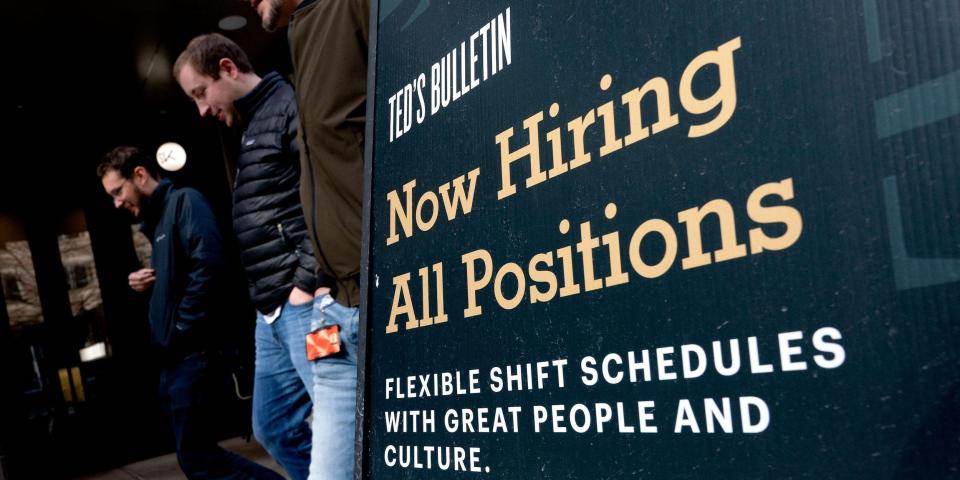The key 10-year Treasury yield is tumbling as softer economic data injects 'hopium' into markets over a Fed policy pivot

The 10-year Treasury yield sharply dropped on Tuesday, highlighting market speculation about a so-called Fed pivot from aggressive interest rate hikes.
Soft economic data including a tumble in US job openings was contributing to sending the 10-year yield down 20 basis points.
US stocks rallied for a second session, including a 3% climb in the Nasdaq.
The widely watched 10-year Treasury yield fell on Tuesday, with a second straight session of losses sparked by revived expectations for a pivot by the Federal Reserve from its aggressive interest rate hikes.
The 10-year Treasury yield sank by 20 basis points during Tuesday's session to 3.61%. The yield - which is tied to a range of loan products including mortgages, student loans, and auto loans - fell on Monday to 3.64%. A week ago, it was at 4.01%, topping 4% level for the first time since 2008.
"[Softer]-than-expected US economic data has raised speculation that there might be a change in central bank policy," Fawad Razaqzada, market analyst at City Index, wrote in a Tuesday note about yields moving lower. The lower yields have sent US stocks into rally mode and the US dollar has moved off 20-year highs.
On Tuesday, the Labor Department in its JOLTS report said job openings fell by 1.1 million to 10.1 million in August, a much larger-than-expected fall as analysts surveyed by Econoday were looking for a decline to 11.15 million openings. The report followed Monday's data from the Institute for Supply Management showing US manufacturing activity grew at a rate of 50.9%. That rate was below expectations of 52.4% and marked the slowest growth since May 2020, when the COVID-19 outbreak was in its early stages worldwide.
The 30-year Treasury yield dropped by 20 basis points to 3.69% on Tuesday, and the short-term 2-year yield slipped 3 basis points to 4.07%. Also spurring Fed pivot speculation was Tuesday's decision by Australia's central bank to raise rates by a smaller amount than expected. The Reserve Bank of Australia raised rates by 25 basis points rather than an estimated 50 basis points.
"The key question for investors in any of these markets is whether the moves will last. After all, it is not the first time we have seen such a squeeze this year, only for the selling pressure to then resume and more profoundly than the rally. Fundamentally, not a lot has changed but there's quite a bit of 'hopium' in these markets," Razaqzada said.
Adding to the data pile on Monday, construction spending fell by 0.7% in August, the Commerce Department said, larger than an estimated 0.6% decline.
"With the [Reserve Bank of New Zealand] due to follow on from a somewhat measly 25bp RBA rate hike overnight, there is a feeling that economic weakness and elevated rates could soon see central banks take a less hawkish tone," Joshua Mahony, senior market analyst at IG, wrote Tuesday.
A drop in yields helped fuel a jump in US stocks over the summer but that rally eventually fizzled in part as Treasury yields began stepping higher. But with borrowing rates declining again, US stocks rallied on Tuesday. The S&P 500 and the Dow Jones Industrial Average each jumped by more than 2.5% and the Nasdaq Composite surged by more than 3%. Stocks also surged on Monday, rallying sharply to kick of the final quarter of the year.
The Fed is expected in November to raise the fed fund rate for the sixth time this year. The benchmark rate stood at a range between 3% and 3.25% after starting the year at 0%.
Read the original article on Business Insider
